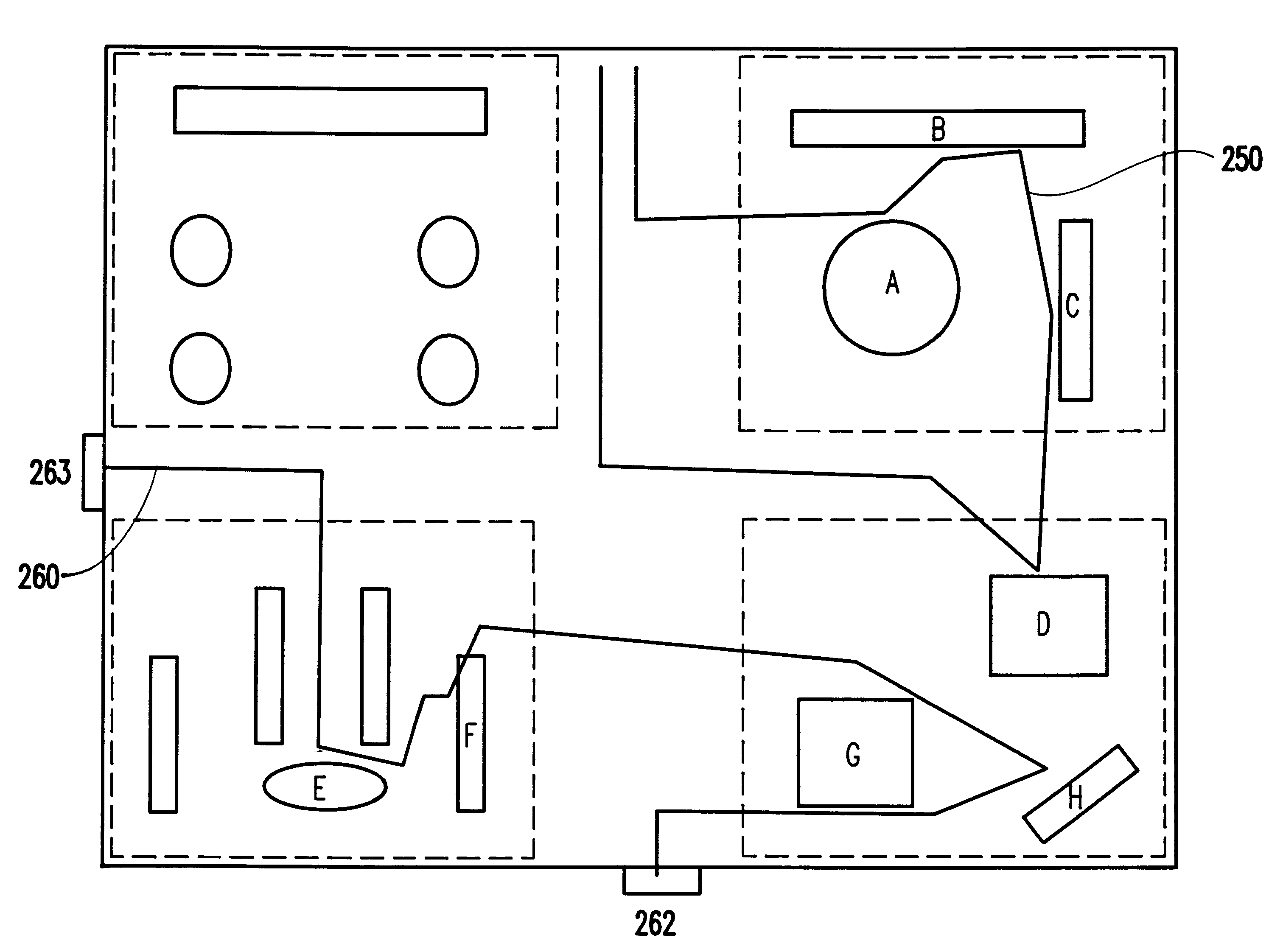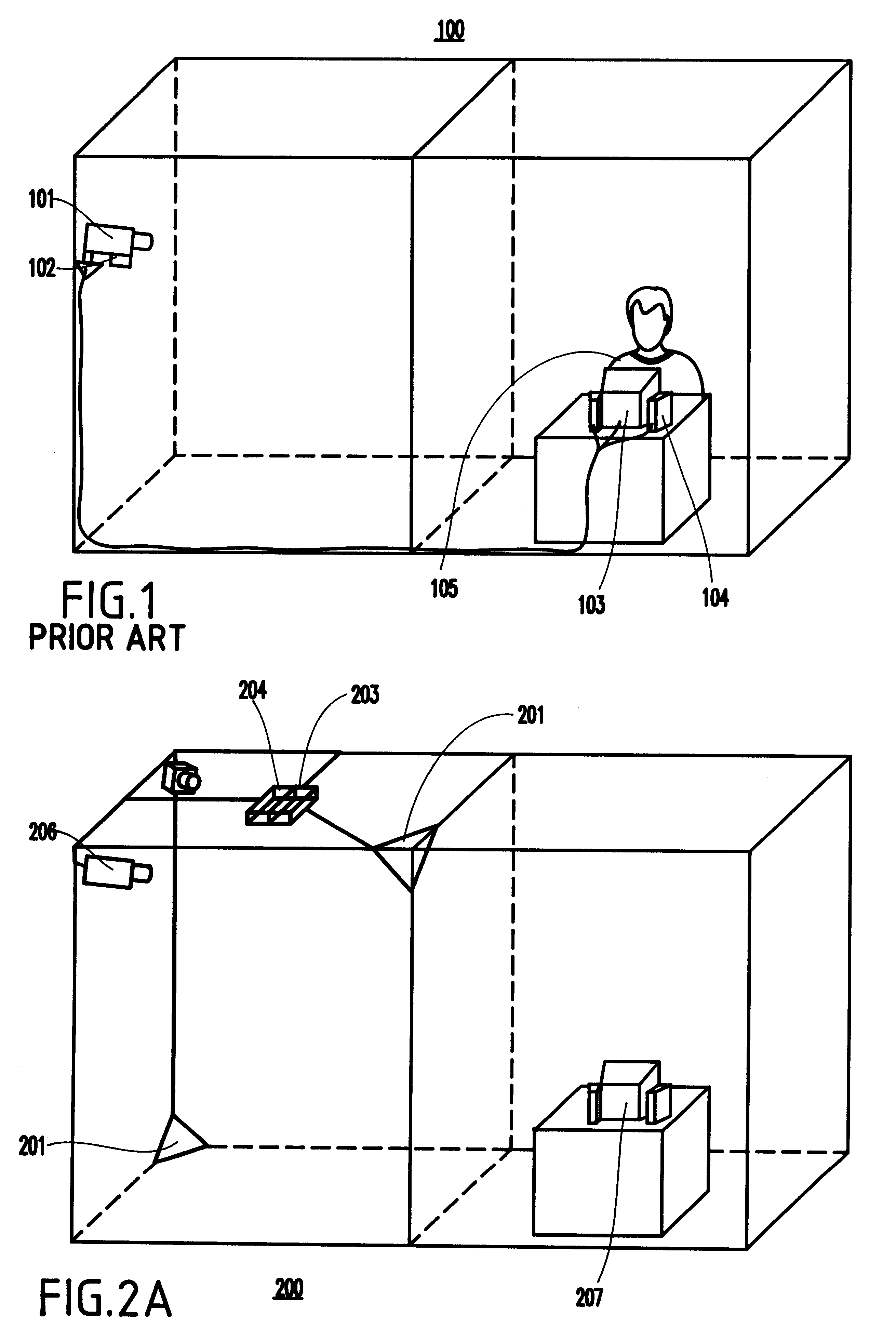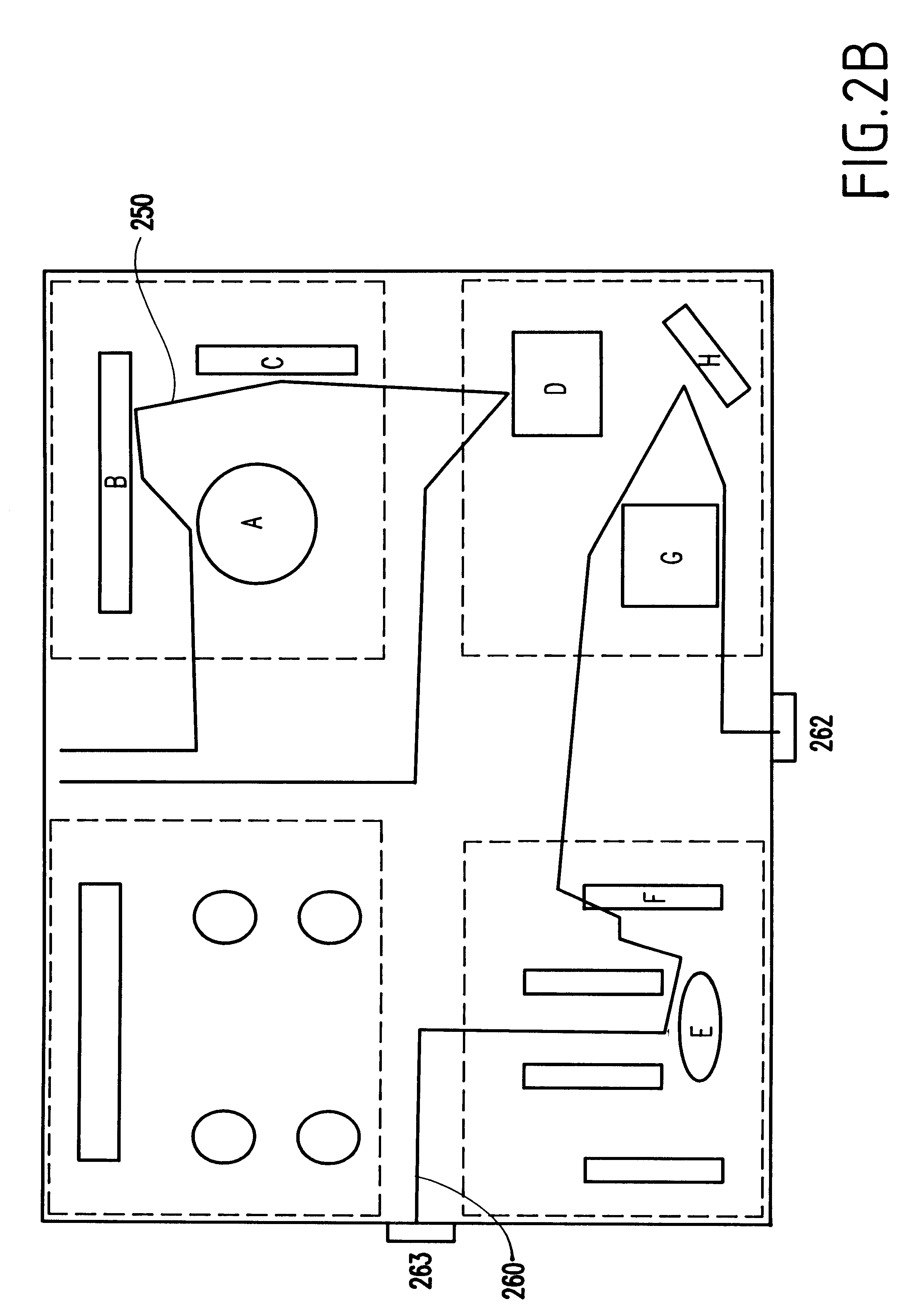System and method for monitoring behavior patterns
a behavior pattern and behavior technology, applied in the field of monitoring systems, can solve the problems of inconvenient monitoring, inconvenient monitoring, inconvenient monitoring, etc., and achieve the effects of reducing the cost of monitoring
- Summary
- Abstract
- Description
- Claims
- Application Information
AI Technical Summary
Benefits of technology
Problems solved by technology
Method used
Image
Examples
Embodiment Construction
Referring now to the drawings, FIG. 2A illustrates a monitoring system according to a preferred embodiment of present invention.
In a preferred embodiment, a monitoring system 200 includes one or more sensors 201 for detecting radiant energy levels which define behavior patterns of monitored objects. The sensors 201 transmit data when there is a change in the field of view of the sensors 201. Such sensors may be, for example, infrared sensors. Further, the sensors 201 may be inexpensive and highly sensitive, and may be located at any location that is not prominent and allow the sensors 201 to operate without interference, such as the ceiling or wall of a room. In addition, since only alarms and / or small amounts of image data are sent, little bandwidth and therefore, little wiring is needed.
In addition, the sensors 201 are easy to install and are programmed so that they understand the geography of the space within which they operate. The highly sensitive sensors 201 also allow the inv...
PUM
 Login to View More
Login to View More Abstract
Description
Claims
Application Information
 Login to View More
Login to View More - R&D
- Intellectual Property
- Life Sciences
- Materials
- Tech Scout
- Unparalleled Data Quality
- Higher Quality Content
- 60% Fewer Hallucinations
Browse by: Latest US Patents, China's latest patents, Technical Efficacy Thesaurus, Application Domain, Technology Topic, Popular Technical Reports.
© 2025 PatSnap. All rights reserved.Legal|Privacy policy|Modern Slavery Act Transparency Statement|Sitemap|About US| Contact US: help@patsnap.com



